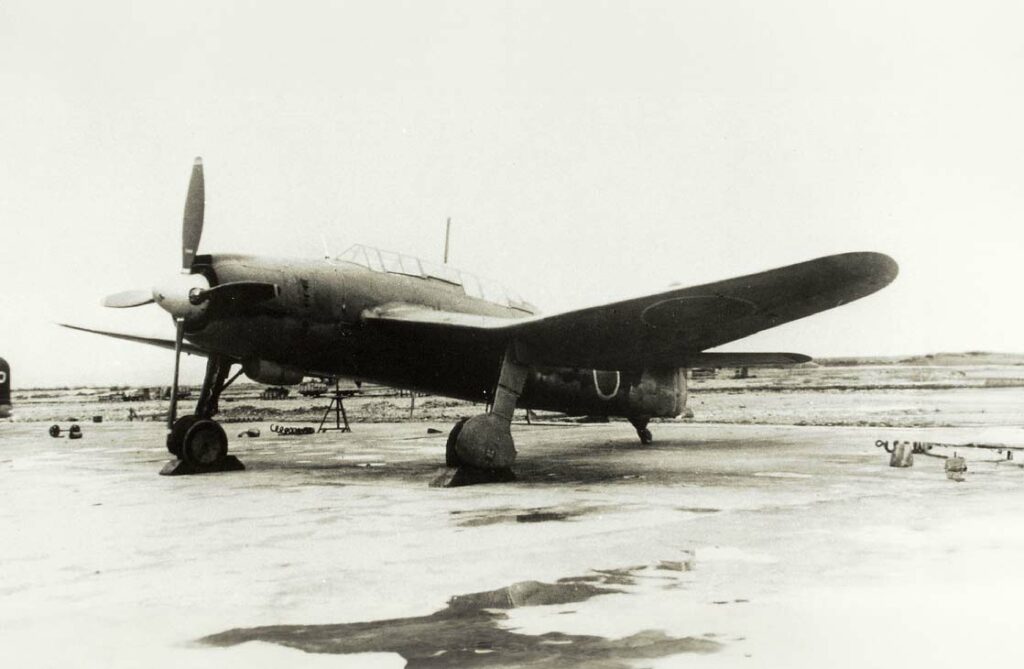The Aichi B7A, a Japanese WWII torpedo/dive bomber, was notable for its versatility, large payload, and exceptional maneuverability.
This article provides an in-depth look at the Aichi B7A, a versatile Japanese torpedo and dive bomber from World War II. It delves into the historical context of its development, underscoring the strategic needs of the Imperial Japanese Navy and the objectives behind the aircraft’s creation. The design of the B7A is examined, highlighting its technical specifications, advantages, and challenges. The aircraft’s performance in terms of engine capabilities, speed, altitude, and operational range is analyzed, along with a comparison to contemporary aircraft. The military use and combat effectiveness of the B7A are discussed, detailing its armament, role in conflicts, operational successes, and comparisons with rival aircraft. The conclusion offers insights into the B7A’s impact on wartime aviation and its legacy.
The Aichi B7A Ryusei, a carrier-based torpedo and dive bomber, played a unique role in the Imperial Japanese Navy during World War II. This piece aims to explore the development, design, performance, and combat history of the B7A, shedding light on its contribution to Japanese naval aviation.
History of the Development of the Aichi B7A:
In the context of World War II, Japan’s quest for air superiority led to the development of the Aichi B7A. Recognizing the need for a versatile aircraft that could perform both torpedo bombing and dive-bombing missions, the Imperial Japanese Navy commissioned the Aichi Aircraft Company to develop such an aircraft. The B7A program was launched under the leadership of chief designer Toshio Ozaki.
The development of the B7A, codenamed “Grace” by the Allies, aimed to combine high speed, maneuverability, and a significant payload capacity, making it a formidable aircraft for naval operations. The project commenced amidst the escalating Pacific War, with the first prototype taking flight in May 1942. This aircraft was intended to operate from Japan’s new generation of aircraft carriers, offering enhanced capabilities over its predecessors.
Design of the Aichi B7A:
The Aichi B7A featured an innovative design for its time. The aircraft was 11.5 meters (37.7 feet) in length, with a wingspan of 14.4 meters (47.2 feet). It was constructed primarily from light alloys and featured a conventional monoplane layout with a low-wing configuration.
One of the key design aspects of the B7A was its powerful Nakajima NK9C Homare 12 radial engine, which provided excellent power and efficiency. The aircraft was equipped with two forward-firing 20mm Type 99 cannons and one rearward-firing 7.92mm machine gun, along with the capacity to carry a significant payload of bombs or a single torpedo.
The B7A’s design offered several advantages, including superior aerodynamics, a robust airframe, and enhanced payload capacity. However, its size and complexity posed challenges in production and carrier operations, particularly given Japan’s diminishing industrial capacity late in the war.

Performance of the Aichi B7A:
The B7A’s Nakajima Homare engine, producing around 1,825 horsepower, propelled the aircraft to a maximum speed of approximately 567 km/h (352 mph). It had a commendable service ceiling of 10,700 meters (35,105 feet) and a range of up to 1,778 kilometers (1,104 miles).
In comparison with Allied aircraft, the B7A was a formidable opponent due to its versatility and payload capacity. It outperformed many contemporary bombers in terms of speed and maneuverability but faced challenges against more agile fighter aircraft.
Military Use and Combat of the Aichi B7A:
The B7A’s armament and payload capacity made it suitable for various combat roles. It was primarily used in torpedo and dive-bombing missions against Allied naval vessels and ground targets. However, its deployment was limited due to production challenges and the destruction of Japan’s carrier fleet.
The B7A was pitted against Allied aircraft in the Pacific, where its performance was generally respectable. Despite its capabilities, the B7A saw limited combat due to its late entry into the war and the changing tide against Japan.
Post-WWII, the B7A was not adopted or used by other countries, and its operational use ceased with the end of the war. It was not replaced by a subsequent model, as Japan’s focus shifted away from military aircraft development after its surrender.
The Aichi B7A Ryusei represented a significant step forward in Japanese aircraft design during World War II. Combining the roles of torpedo bomber and dive bomber, it was a versatile and capable aircraft, reflecting Japan’s advanced aviation technology of the era. Despite its limited use in combat, the B7A demonstrated Japan’s ingenuity in aircraft design and contributed to the evolution of naval aviation tactics. Its legacy in military aviation history underscores the importance of versatility and adaptability in aircraft design, especially during periods of intense technological and tactical shifts.
Back to the Bombers section.